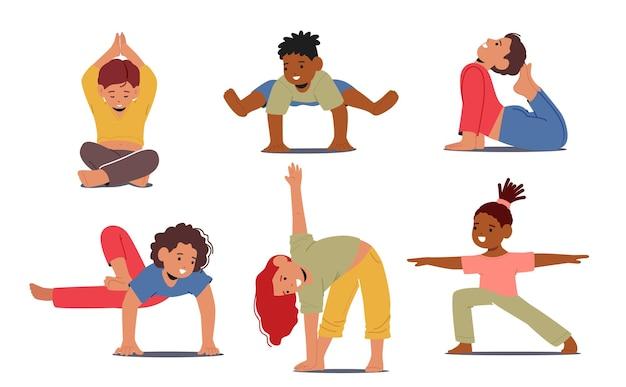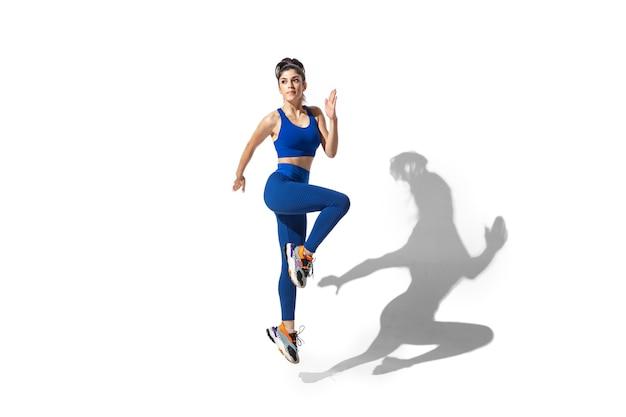Physical education plays a critical role in promoting overall health and well-being among students. It goes beyond just participating in sports and games. Physical education encompasses a wide range of activities aimed at developing physical fitness, motor skills, and cognitive abilities. One of the key elements within physical education is movement.
Movement is crucial in physical education as it encompasses a variety of physical activities that promote the development of strength, flexibility, coordination, and cardiovascular endurance. It involves exercises, games, and challenges that engage the body and mind, ultimately contributing to a healthier and more active lifestyle.
In this blog post, we will explore the importance of movement in physical education, understand the components and their significance in promoting physical health education, and delve into the objectives and types of physical activities. So let’s dive in and discover why movement is the keystone of physical education in 2023.

Why Movement is Vital in Physical Education
In the fast-paced world of physical education, movement takes center stage. But why is movement so crucial in this domain? Let’s delve into the reasons why it plays a vital role in physical education and discover how it benefits both the mind and body.
Boosting Physical Fitness and Health
Physical education is all about getting our bodies moving, and movement is the key to achieving and maintaining physical fitness. By engaging in regular physical activity, students can improve cardiovascular health, increase muscle tone, enhance flexibility, and develop coordination and balance.
Enhancing Cognitive Function
Believe it or not, movement not only strengthens the body but also stimulates the brain. Engaging in physical activity triggers the release of endorphins, those magical neurotransmitters that uplift our mood and improve mental well-being. Regular movement has also been linked to enhanced cognitive function, improved memory retention, and increased focus and concentration.
Fostering Social Skills and Teamwork
Physical education classes are not only a chance to break a sweat but also an opportunity to develop social skills and foster teamwork. Through various physical activities, students learn how to cooperate, communicate effectively, and build relationships with their peers. Team sports and group exercises promote collaboration, leadership, and the ability to work as part of a team.
Combating Sedentary Lifestyles
In a time when screens seem to dominate our lives, physical education plays an essential role in combating sedentary lifestyles. Encouraging movement during school hours helps counterbalance the sedentary nature of modern life. Physical education classes provide students with the chance to disconnect from screens and engage in active play.
Instilling Lifelong Healthy Habits
The habits we form during our school years often stay with us throughout our lives. By incorporating movement into physical education, we instill healthy habits that can carry on into adulthood. When students develop a positive relationship with physical activity at an early age, they are more likely to continue leading active, healthy lifestyles in the future.
Promoting Mental Well-being
Physical education not only benefits our physical fitness but also promotes mental well-being. Physical activity has been shown to reduce stress levels, alleviate symptoms of anxiety and depression, and boost overall mental resilience. By incorporating movement into their routine, students can improve their mental health and find a positive outlet for emotional expression.
Catering to Different Learning Styles
Not every student learns best sitting still at a desk. Movement allows for a more dynamic and inclusive learning environment. Physical education provides opportunities for kinesthetic learners to excel and engage with the material in a way that suits their unique learning style. By offering diverse movement-based activities, educators cater to the needs of all students, ensuring a well-rounded education for everyone.
Embracing the Joy of Being Active
Last but certainly not least, movement in physical education is essential because it helps students embrace the joy of being active. Through a variety of fun and engaging activities, students can develop a love for movement and discover the pleasure of staying active. By making physical education enjoyable, we create a positive relationship with exercise that can extend far beyond the confines of the school gymnasium.
In conclusion, movement is not just essential in physical education; it is the very fabric of this discipline. From improving physical fitness to boosting cognitive function, fostering social skills, combating sedentary lifestyles, and promoting mental well-being, movement holds the key to a healthier, happier, and more fulfilled life. So let’s get moving and embrace the wonders that physical education can offer us all!

FAQ: Why is Movement Important in Physical Education?
What are the Components of Physical Education
Physical education encompasses various components that contribute to overall well-being and fitness. In a nutshell, it involves a combination of exercise, sports, and structured physical activities. By engaging in these components, individuals can enhance their physical, mental, and social development. Through physical education, students learn the fundamentals of physical fitness, health, and active lifestyles.
Why is Movement Essential in Physical Education
Movement is a cornerstone of physical education, and here’s why: movement enhances physical fitness and body coordination, strengthens cardiovascular health, and improves muscular endurance. Beyond the physical benefits, movement also promotes mental well-being, aids in stress reduction, and boosts cognitive function.
What are the Components of Physical Education and their Meaning
Physical education comprises several components that correspond to different aspects of overall fitness and well-being. These components include:
- Cardiorespiratory Endurance: This component focuses on improving the heart, lungs, and circulatory system’s efficiency to deliver oxygen to the body during physical activity.
- Muscular Strength: Here, the emphasis is on strengthening muscles to generate maximum force.
- Muscular Endurance: Unlike strength, muscular endurance focuses on the ability of muscles to sustain repeated contractions over an extended period.
- Flexibility: This refers to the range of motion in joints and muscles, allowing for optimal movement and preventing injuries.
- Body Composition: Body composition describes the ratio of lean muscle mass to fat in the body, which contributes to overall health and physical fitness.
What are the Two Basic Components of Physical Education
The fundamental components of physical education are skill-related fitness and health-related fitness.
Skill-related fitness includes agility, balance, coordination, power, reaction time, and speed. These attributes enable individuals to perform specific physical activities with precision and effectiveness.
Health-related fitness encompasses cardiovascular endurance, muscular strength, muscular endurance, flexibility, and body composition. These aspects directly impact one’s overall health and well-being, influencing everything from stamina to disease prevention.
What is Movement Education in Physical Education
Movement education, often employed in physical education, emphasizes the development of fundamental movement and motor skills. It aims to enhance students’ physical literacy by teaching them how their bodies move and enabling them to acquire skills applicable to various sports and physical activities. Movement education cultivates confidence, body awareness, and the ability to move with efficiency and control.
What is the Definition of Physical Health Education
Physical health education refers to the instruction and guidance provided to individuals regarding their physical well-being. It encompasses comprehensive education on nutrition, exercise, personal hygiene, lifestyle choices, and injury prevention. By imparting knowledge and skills, physical health education empowers individuals to make informed decisions to maintain and improve their physical health.
What are the Three Main Types of Physical Activities
Physical activities can be broadly categorized into three main types:
-
Aerobic exercises: These activities increase heart rate and breathing, resulting in improved cardiovascular endurance. Examples include brisk walking, jogging, cycling, and dancing.
-
Strength training: This type of activity aims to enhance muscular strength and endurance through exercises such as weightlifting, resistance training, and bodyweight exercises.
-
Flexibility exercises: Stretching exercises promote flexibility and range of motion, reducing the risk of injuries and enhancing overall physical performance. Activities like yoga, Pilates, and static stretching fall under this category.
What are the Aims and Objectives of Physical Education
The primary aims and objectives of physical education include:
- Promoting an active and healthy lifestyle among individuals of all ages.
- Developing physical fitness, motor skills, and coordination.
- Fostering leadership skills, teamwork, and sportsmanship.
- Instilling a lifelong appreciation for physical activity and recreational pursuits.
- Enhancing mental well-being, self-confidence, and self-esteem through physical engagement.
Why is Movement the Keystone of Physical Education
Movement is the keystone of physical education because it unlocks a multitude of benefits that extend far beyond physical fitness. It strengthens the mind-body connection, sharpens cognitive skills, and improves concentration and focus. By promoting movement, physical education creates a platform for students to discover their physical capabilities, develop essential life skills, and cultivate a positive and holistic approach to health and wellness.
As you delve into the realm of physical education, remember that physical activity is not merely a form of exercise; it’s an adventure towards a vibrant and fulfilling life. So, lace up those sneakers, embrace your body’s innate joy of movement, and let physical education pave the way to a healthier, happier you!
Now that we’ve addressed some frequently asked questions, let’s move on to exploring additional aspects of physical education and the incredible impact it can have on enriching our lives.
